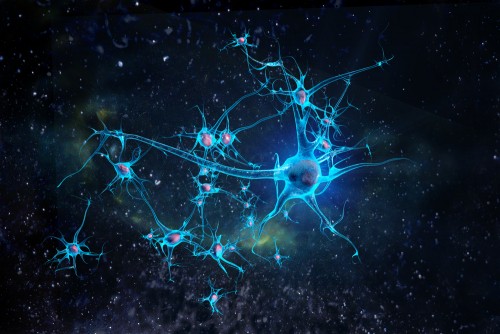Prof. Idan Segev is a member of the Blue Brain Project, one of the largest projects in the field of the brain currently being carried out in the world, and is the basis of the European Union's Human Brain Project. The study presents a digital reconstruction of an area of the rat's brain responsible for touch.

Prof. Idan Segev from the Edmond and Lili Safra Center for Brain Research is one of the authors of the study and is a key partner in the Blue Brain Project. The Blue Brain Project is one of the largest brain projects in the world today, and is the basis of the European Union's Human Brain Project. The study presents a digital reconstruction of an area of the rat's brain responsible for touch.
The digital reconstruction is a comprehensive computer model that represents the shapes and electrical behaviors of about 30,000 nerve cells (neurons) in reconstructed tissue, and about 40 million synapses (sites of connection and communication between nerve cells) that they create, the research is a very important milestone in understanding the brain.
The research was published in the prestigious journal CELL and is the result of the hard work of 82 scientists and engineers at EPFL in Blois, Switzerland, and at research institutions in Israel, Hungary, the USA, China, Sweden and the UK. The study represents a 20-year study of biological experiments created in the core array, and 10 years of calculations and algorithm development through which we built the software necessary to digitally reconstruct the tissue.
Prof. Idan Segev, a senior researcher from the Hebrew University said: "In the Blue Brain project we are creating a detailed digital reconstruction of a neural network in the brain and through computer simulations we are researching and making progress in understanding the electrical behavior of the neural network. This allows us to examine brain phenomena in a digital environment. In the past, such experiments were only possible on biological tissues. The insights we gather from these experiments will help us understand different states in the healthy and diseased brain, and in the future we can also use it to develop new ways to treat brain disorders.

5 תגובות
I'm not a big expert either
But it may be that during the experiments to simulate the communication between the neurons, new connections are formed
In my opinion, an experiment should be done on the nerve cells of a rat, the ability to form new connections is weak or lacking genetics
Arya Thank you, we will think about it, although there is something in the answer that Zvika gave.
Perhaps when you increase the number of neurons in the neural network then the calculation power needed to operate the network increases exponentially.
Rival - interesting question; Maybe refer her to the university spokeswoman pressoffice@savion.huji.ac.il
It's not that I'm a great expert in the field, but it could be that the increase is exponential in the amount of connections between nerve cells. That is, if 10,000 neurons have X possible connections, then 30,000 have X in the power of Wi connections.
And in total it is about "40 million synapses (sites of connection and communication between nerve cells) that they create", which is a much more impressive number.
Something a little strange... In 2005, the team working on the project reported that they managed to perform an accurate simulation of about 10,000 nerve cells:
http://seedmagazine.com/content/article/out_of_the_blue
It's been 10 years, and the amount of neurons in the imaging has only tripled?
Where is the exponential increase in computing power manifested?